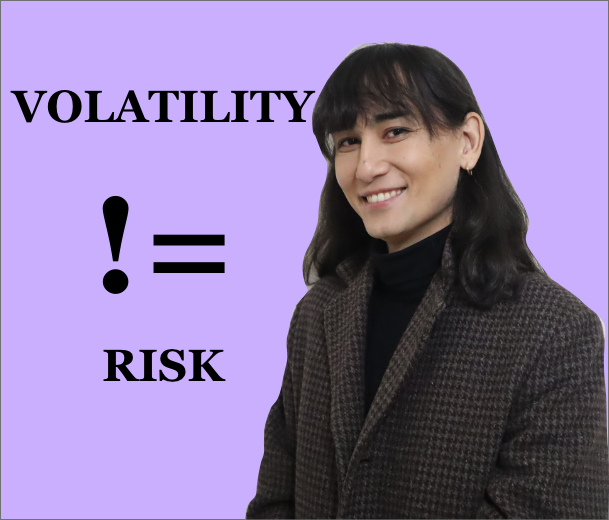Volatility or also known as standard deviation, is a measure that tells you how much your stock fluctuates. The measure takes the average stock price for the period and measures the deviation from that average price. The higher the variation, the higher the volatility. Some traders and investors believe that it can be a good measure of stock loss. It is, and it is not. And let us consider why. First, I should say that for shorter-term traders’ who trade a single stock (which is not a good idea), volatility can be viewed as a stock risk, as short-term traders open shorter positions and can be caught by price fluctuations. They cannot eliminate the market risk but can balance their portfolios with assets with negative correlations or trade other asset classes, or use derivative instruments. If a trader creates an investment portfolio or uses derivative instruments, the volatility is no longer a risk measure. The same applies to the long-term traders too. Now let us consider why the volatility is not a risk for the traders and investors.
The volatility depends greatly on geopolitical, economic factors, and other factors, such as the company’s financial vision, analysts’ forecasts, long-term goals, operational risks, and many other things. If you take the current U.S stock market as an example, as of May 2022, you will notice that many larger, more stable companies’ stocks and value stocks are highly volatile. Does it tell you that those stocks are riskier? I don’t think so. If you examine the company’s profiles (of those stocks), you will notice that they have stable operational dynamics, FCF, controllable costs, strong products or services, and a wide economic moat, but still, stocks fluctuate enormously. This is due to the more challenging market conditions and inflation pressures. But those things tend to vanish in the long run, leaving you with the return perspectives. It is not wise to avoid highly volatile stocks because their prices fluctuate enormously. Volatility is a good measure of market turbulences, investors’ confidence, and political and economic tensions. Volatility is not a good measure of a company’s stock riskiness. Because if you examine value stocks, larger companies, such as NVIDIA or APPLE, their stock prices tend to be very volatile in the short run, but when you look at the long run (5-10 year graph), you will notice that stock prices skyrocketed. if you have the right approach to stock trading, volatility is not a measure of risk. What is the right approach? Never buy a single stock, diversify your holdings with portfolio management, invest in different asset classes, have value stocks and smaller portions of growth stocks, and use derivative instruments.
You may ask “how can I measure the risk if I have the right approach?”. You can measure the risk by examining the money market rates, if they go higher, your cost of funding increases and return perspectives decrease. That is why a good measure of risk on the stock market is a treasury yield minus the inflation rate. This shows you how much your asset value can deteriorate over the long run. And the long run Is the only thing you should be focused on if you want to generate solid returns. And your return perspectives would depend on how well you can forecast the money market rates. I never pay attention to single-stock volatility because I know that the volatility tends to change, and value stocks tend to generate good returns over the long run. I pay attention to my portfolio’s volatility, but I do so not to manage risk but to manage my investment strategy. Portfolio volatility can tell me what my investment strategy is; the higher the volatility, the broader profit/loss range I can expect, and the more risk-seeking investor I am. Volatility can be viewed as an expected loss/profit range but not as a measure of loss or return.
I pay more attention to what assets are in my portfolio, value vs. growth, stocks only or stocks and fixed income, do I use foreign currencies, do I use derivatives, and how well is my portfolio constructed. And the most critical factor that influences my portfolio’s risk is time and money market rates. Focus on a longer investment horizon, wise portfolio diversification, and stable money market rates. Thank you for reading my article. If you have questions, please contact me via email: skobzhan@diversset.com.

